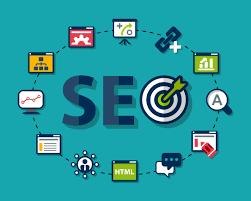You created an outstanding website – congrats! Now all you need to do is bring people to it. For your website to appear as one of the top results on search engines like Google and Bing, you need to understand a little bit about the world of “Search Engine Optimization” or SEO.
How to improve your website’s SEO in 5 steps:
With so many sites on the web today, there is no guarantee that your site will rank first on Google. There are, however, plenty of simple things you can do to increase your site’s chances of ranking well. In just an hour’s time.
01. Choose the right URL
Before your website goes live, you need to give it a name. Also known as your domain name, this is the address that visitors will type in to find your site. Like the giant sign above a storefront window, it’s one of the first things visitors see when they come to your site. That’s why it’s also the first place Google looks to understand what your site is about and to decide how to rank it.
With this in mind, it’s important to make sure all your pages’ URLs are clean and beautiful. This means no special characters, no hashtags, no page ID. You get the point.
The ideal domain will include your business name and perhaps a relevant keyword or two that are relevant to your business. For example, if you are a contractor, you might want to purchase a domain name like www.yournameconstruction.com.
02. Create titles and descriptions for each page
Did you know that you can write a unique title and description for each page of your website? These are brief texts that accurately and clearly describe what your business does. Ideally, they can come with a few keywords and phrases mixed in.
Ever hovered over a tab on your browser? That short phrase that pops up under your mouse is the title of the page. While the description is not visible on your page, it’s very important for search engines. In fact, the title and description are among the first elements search engines track to determine your site’s ranking. Plus, once your site does show up in a search results page, web surfers will read your title and description to learn what your site is about and decide whether or not to check it out.
03. Utilize anchor text
As you write the text for your website, consider where you can use anchor text within your site. Anchor what? No, it has nothing to do with sailing. Anchor text is the clickable text on a hyperlink that visitors can use to be taken directly to another web page, either within your site or anywhere on the internet.
Effective anchor text should be used to help users navigate your website and find what they are looking for. It should also include keywords and phrases related to what you do. If you own a shoe store, for example, the words, “Check out our selection of children’s shoes,” on your homepage can link via anchor text to your online store that’s stocked full of – you guessed it – children’s shoes.
Anchor text is a great way to boost your SEO, but keep in mind that excessive linking or anchors that don’t really help your readers can raise some red flags with Google.
04. Add alt text to all your images
Search engines are great at reading text on your website, but they still haven’t quite figured out how to look at the images on your site. To understand what’s displayed in a photo or graphic, search engines look for “alt text,” a concise written description (no longer than just a few words) about each image on a website. When writing alt text, be sure to accurately describe what is shown in the image, but also try to include the name of your business or a few keywords related to what you do.
Pro tip: You don’t need to write alt text for images that are purely functional or design related, such as a background image that is just shapes. If the image doesn’t have anything to do with the topic of your site, you can skip the alt text.
Want to learn more? Take a look at this article about writing SEO friendly alt text for your images. For more tips on how to optimize images for your website, visit our favorite photography blog.
05. Give your site structure with the right headers
Every page on your website should have a title, a subtitle and so on. When search engines scan your website, they’ll understand your content better if you are using the correct text hierarchy. The most relevant part is the title of your page, and you should define it as H1 (in the Text’s Editor).
The H1 should be descriptive of the page’s content and you shouldn’t have more than one H1 per page. Choose your title carefully and don’t forget to include your main keywords. Following your H1 in the hierarchy of headers is H2, H3, etc. While H1 corresponds to your title, H2 and H3 correspond to your headings and subheadings, respectively. The clearer your text structure is, the easier search engines will digest your site’s content.

Recent Comments